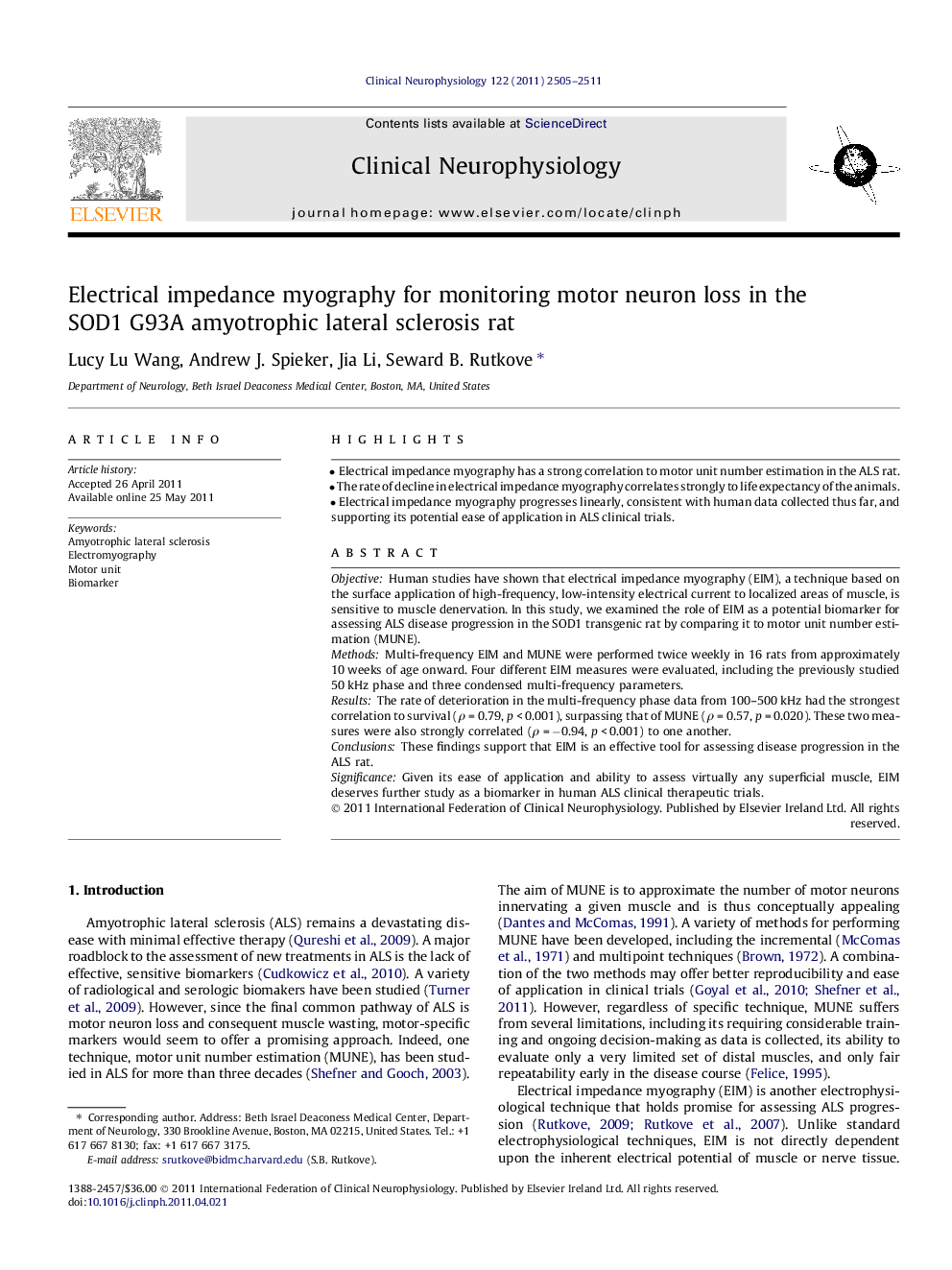| Article ID | Journal | Published Year | Pages | File Type |
|---|---|---|---|---|
| 3043989 | Clinical Neurophysiology | 2011 | 7 Pages |
ObjectiveHuman studies have shown that electrical impedance myography (EIM), a technique based on the surface application of high-frequency, low-intensity electrical current to localized areas of muscle, is sensitive to muscle denervation. In this study, we examined the role of EIM as a potential biomarker for assessing ALS disease progression in the SOD1 transgenic rat by comparing it to motor unit number estimation (MUNE).MethodsMulti-frequency EIM and MUNE were performed twice weekly in 16 rats from approximately 10 weeks of age onward. Four different EIM measures were evaluated, including the previously studied 50 kHz phase and three condensed multi-frequency parameters.ResultsThe rate of deterioration in the multi-frequency phase data from 100–500 kHz had the strongest correlation to survival (ρ = 0.79, p < 0.001), surpassing that of MUNE (ρ = 0.57, p = 0.020). These two measures were also strongly correlated (ρ = −0.94, p < 0.001) to one another.ConclusionsThese findings support that EIM is an effective tool for assessing disease progression in the ALS rat.SignificanceGiven its ease of application and ability to assess virtually any superficial muscle, EIM deserves further study as a biomarker in human ALS clinical therapeutic trials.
► Electrical impedance myography has a strong correlation to motor unit number estimation in the ALS rat. ► The rate of decline in electrical impedance myography correlates strongly to life expectancy of the animals. ► Electrical impedance myography progresses linearly, consistent with human data collected thus far, and supporting its potential ease of application in ALS clinical trials.
